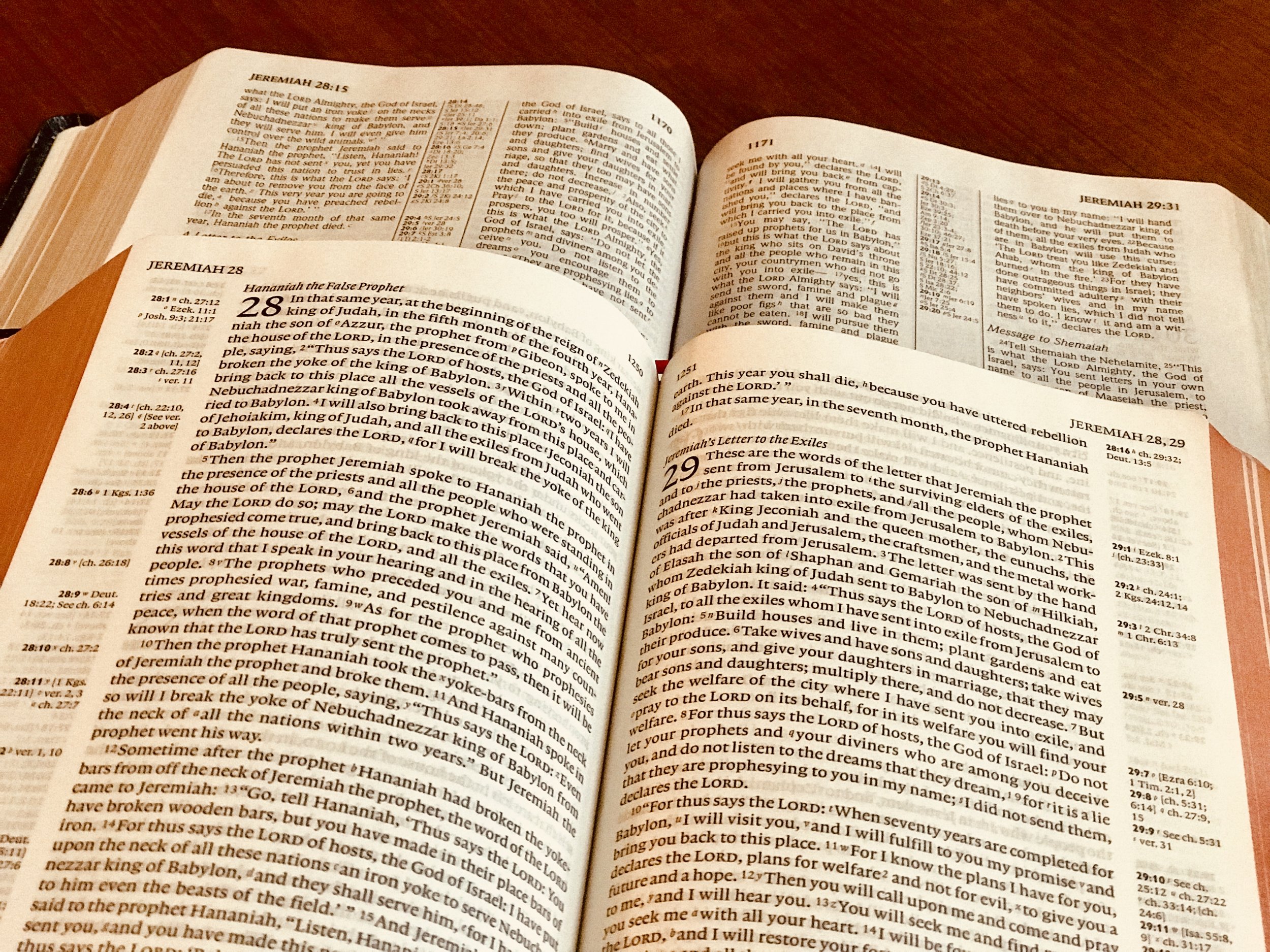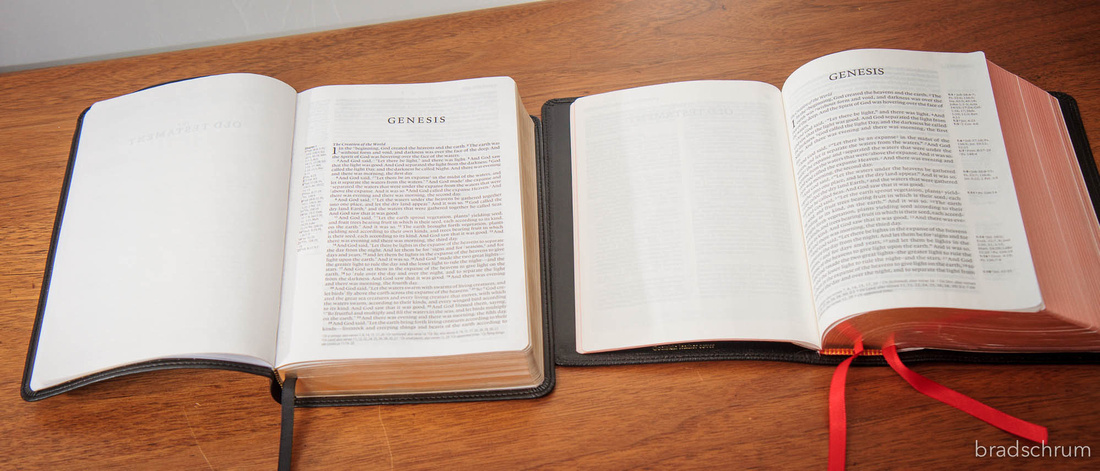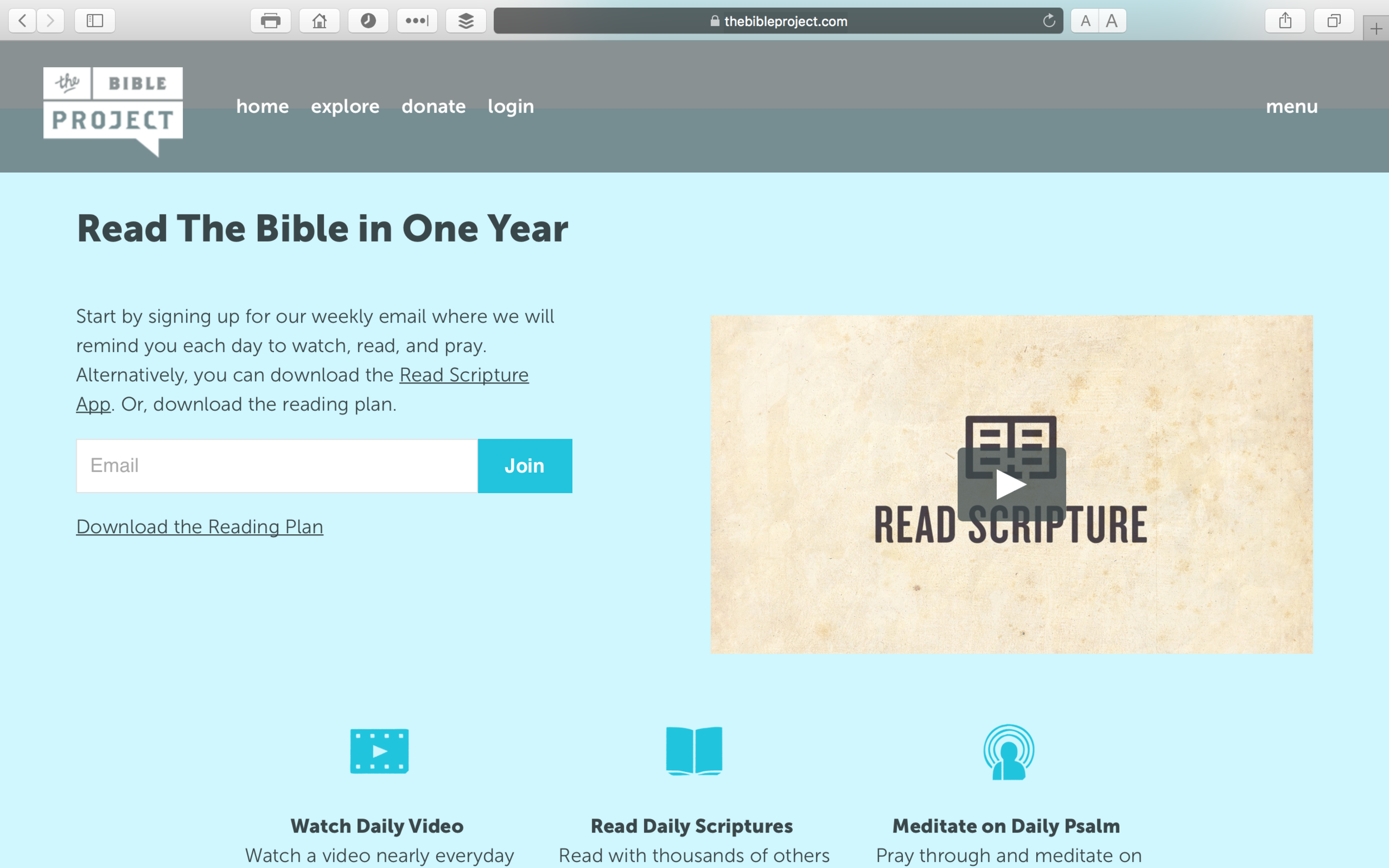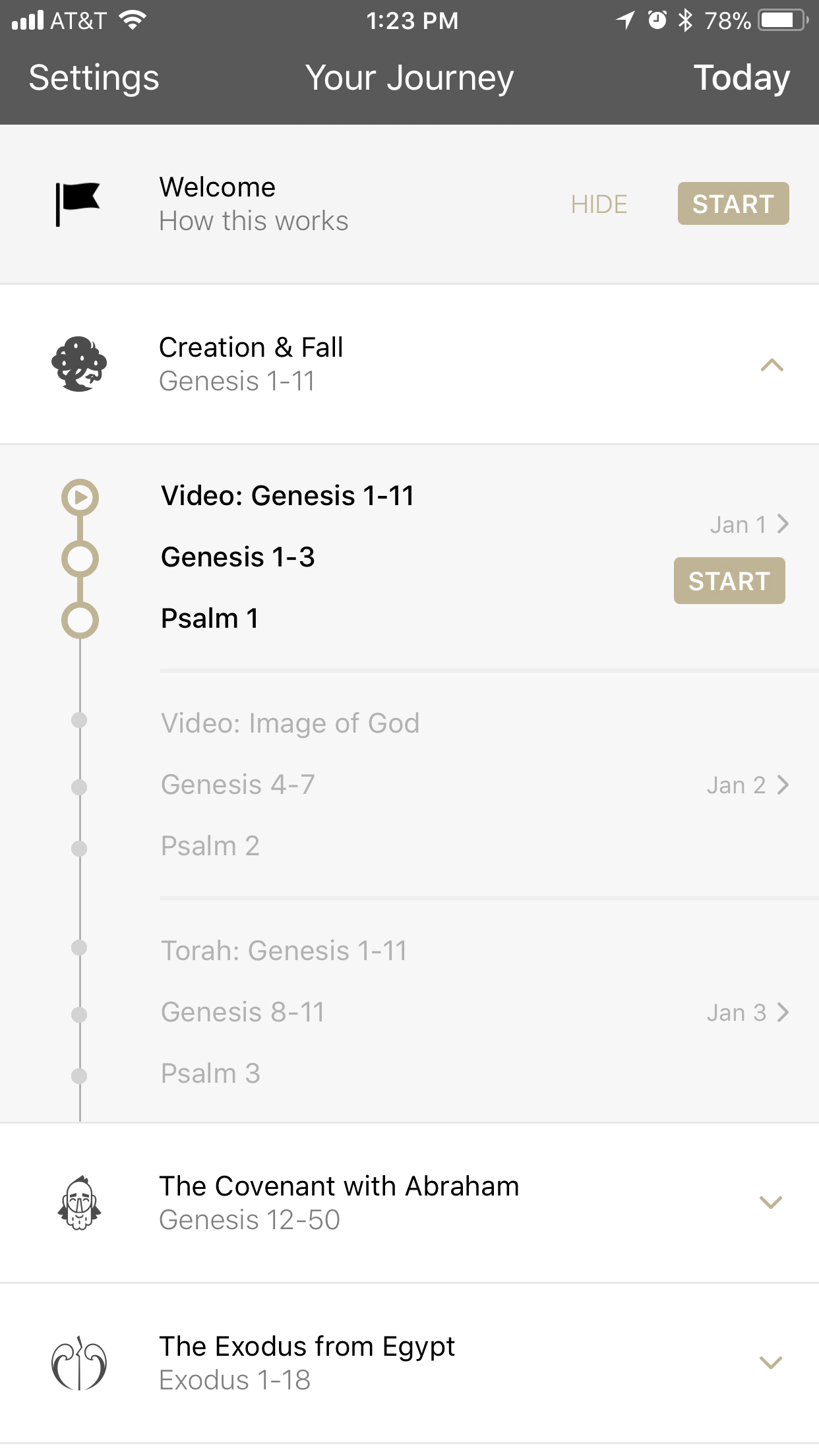Matthew's Genealogy, Billy Joel's Song, and a Quiet Divorce [Matt. 1-2]
I'm going to be blogging regularly this fall as I read through the New Testament. (I'm going to commit to blogging each day as we read through the Gospel of Matthew, and see what that's like. Each day's Bible post will go live at 4:30 AM.) Below are some quick thoughts on our first day's reading, Matthew 1-2.Two important things to keep in mind as you read The New Testament:
- The story of Jesus only makes sense in the context of the Old Testament. Lots of what Jesus does is a conscious fulfillment of the Lord's covenant with Abraham's family (which started way back in Genesis 12). This means when something Jesus does doesn't make immediate sense to you, it's probably because you're missing the Old Testament connection.
- Even more than the other Gospel writers, Matthew is particularly concerned with connecting Jesus to Israel's story.
This is why Matthew begins with a genealogy of Jesus--the family tree he provides shows that Jesus is related to the family of Abraham. More than that, each name is shorthand for all the times and places in which that person lived. The genealogy seems boring to us because the names might not mean anything us--like reading random entries in a phone book--but to the 1st century Jews who were Matthew's original readers, each name was a touchstone to family stories that were cherished by the descendants of Abraham.
"Jesus and Genealogies"
On The Bible Project site I'd recommend you read "Jesus & Geneologies," an article I found really helpful. For example, did you know?
Just think about the separated sections of the genealogy of Matthew. It is broken up into three parts that cover 14 generations each, but why 14?Within the written language of Hebrew, the letters are also used as their numbers, and so each number is assigned a numerical value. The name of David in Hebrew is ???,? and from here you just do the math. The numerical value of the first and third letter ?? (called dalet) is 4. The middle letter ?? (called waw) has a numerical value of 6. Put it into your mental calculator: 4+6+4=14, the numerical value of the name of David.Matthew has designed the genealogy, so it links Jesus to David explicitly, and also in the very literary design of the list. In fact, Matthew wants to highlight this 14=David? idea so much that he‘s intentionally left out multiple generations of the line of David (three, to be exact) to make the numbers work.Wait, Matthew has taken people out of the genealogy?Yes, and this is not a scandal. Leaving out generations to create symbolic numbers in genealogies is a common Hebrew literary practice, going all the way back to the genealogies in Genesis (the 10 generations of Genesis 5, or the 70 descendants of?Genesis 11). Ancient genealogies were ways of making theological claims, and?Matthew‘s readers would have understood exactly what he was doing and why.
"We Didn't Start the Fire"
This opening genealogy has got me thinking about Billy Joel. Each name meant something to Matthew's audience, in the way that the names in Billy Joel's song mean something to a certain type of Baby Boomer:[embed]https://www.youtube.com/watch?v=eFTLKWw542g[/embed](By the way, I love this related scene from "The Office:"[embed]https://www.youtube.com/watch?v=RrjBpW6OSbg[/embed]That's from when The Office was still funny....)
The Quiet Divorce
Now the birth of Jesus Christ took place in this way. When his mother Mary had been betrothed to Joseph, but before they came together she was found to be with child from the Holy Spirit. And her husband Joseph, being a just man and unwilling to put her to shame, resolved to divorce her quietly"
I've always found that to be a quietly moving line: "And her husband Joseph, being a just man and unwilling to put her to shame, resolved to divorce her quietly." That decision of Joseph's was a small, selfless act of kindness on which the fate of the world turned.Don't underestimate the importance of a small, unnoticed act of selfless kindness today. Who knows what hangs in the balance?
P.S. Changes to this Blog
This is the last post that my subscribers will receive as a standalone email. Starting Friday, August 24 through Monday, December 24, at Munger we are going to be reading through the New Testament. I'm planning on posting more frequently in this space, including regular (daily?) commentaries on what we're reading. Right now, subscribers get an email every time I post, but I don‘t want to fill up your Inbox, so tomorrow I'm going to be switching to a weekly newsletter that will contain links to the previous week‘s posts, as well as some other original content from me not available anywhere else.If you are already a subscriber, you don‘t need to do anything else. (If you want to be sure and read each post as it comes out, subscribe to my blog‘s RSS feed. There are lots of tutorials online to explain how to do that.)If you are not a current subscriber, here‘s how to subscribe:
I‘ve written a very short whitepaper on a subject I care a lot about communication.Subscribe to my newsletter and I’ll send it to you for free:The Simple Technique Anyone Can Immediately Use To Become a Better Communicator.(If you are already a subscriber, drop me a line and I’ll send you the whitepaper.)
My Bible Reading Plan for 2018
I'm going to read through the Bible in 2018, but if I'm going to make it beyond the first few pages, I know enough about myself to know that I need a good plan to follow. If I go to the gym without a plan, I'll fool around for 10 minutes and then say, "I've done enough for today--time to go home." I need to have a plan in place before?I go to the gym, and in the same way I need a plan to read the Bible, too. Otherwise, I just won't get anything done.So, here are 6 elements of my plan to read through the entire Bible in 2018.
1. The Read Scripture Plan
I'm using the READ SCRIPTURE reading plan put out by The Bible Project guys. It's roughly a Genesis to Revelation plan, though the order of some of the Old Testament books are rearranged to help you follow the narrative arc a bit better.
- The plan runs from January 1-December 24, 2018.
- Each day's reading will take about 15-20 minutes to complete.
- Every day there is 1 main reading (from either the Old Testament or New Testament, depending on where you are in the year).
- And every day there is 1 Psalm for devotional purposes.
This "Read Scripture" video from the Bible Project guys explains the plan.[embed]https://www.youtube.com/watch?v=7hUs4TXRuVk[/embed]
2. The Read Scripture App
There is a free Read Scripture app that I'm going to use. I'm planning on doing my reading in my own Bible (more on that below), but I'm excited about also using the app to help me stay on track.
- The app includes each day's reading in a stripped-down format, so I can complete my reading right in the app, if I want.
- The app also includes a setting to include a daily reminder on my phone, and allows me to track my progress.. I'm the kind of person who likes checking things off each day, so I'll use the app for that purpose.
- As you can see in the screenshot below, the app also includes direct links to explanatory videos that are paired with a daily reading from time to time.
3. The Bible Project videos
The Read Scripture plan sometimes suggests explanatory videos to supplement a day's reading portion. (As I mentioned above, one of the benefits of the app is that it includes direct links to the videos, so you don't have to search on YouTube.) The videos the Bible Project guys are producing are REALLY GOOD. To cite one out of their dozens and dozens of really helpful videos, here is an overview of the Book of Leviticus:[embed]https://www.youtube.com/watch?v=WmvyrLXoQio[/embed]
4. A Brand-New Bible
Though I'm going to use the app to keep my on track, I'm planning on using my own Bible to complete the readings. (We're handing out bookmarks at church with a month's worth of readings at a time; here's a pdf of the January schedule.)
- I prefer to read on paper than in an app, when possible.
- I like to make notes, circle, underline, etc.
- This will be the same Bible I'll be preaching out of in 2018.
I used my Christmas money and bought a stunningly beautiful new Bible: a Cambridge Clarion Reference ESV in Black Goatskin. These Cambridge Bibles are $$$$, but they are absolutely the most beautiful books I have ever held.Here's how I decided on this particular Bible:
- I didn't need a study Bible;
- I wanted something relatively portable;
- I also wanted it big enough to have room for notes;
- I wanted cross-references (the little margin notes that tell you when the same quotation appears elsewhere in the Bible);
- I wanted an ESV translation, since it's not what I've used previously;
- And most importantly, I wanted a single-column text. All the other Bibles I own have double columns, but I thought it would be a good change to try a single column.
 I eventually found myself deciding between two Bibles that met my criteria: the Cambridge Clarion ESV and the ESV Personal Reference Bible. Brad Schrum has a detailed and very helpful post with lots of pictures comparing the two. I decided on the Cambridge Clarion because it was slightly larger and I just liked the feel of it in my hand a bit more, but the ESV Personal Reference Bible was also a really good option. (If you're in the Dallas area, the bookstore at Dallas Theological Seminary has both editions, if you'd like to compare them.)
I eventually found myself deciding between two Bibles that met my criteria: the Cambridge Clarion ESV and the ESV Personal Reference Bible. Brad Schrum has a detailed and very helpful post with lots of pictures comparing the two. I decided on the Cambridge Clarion because it was slightly larger and I just liked the feel of it in my hand a bit more, but the ESV Personal Reference Bible was also a really good option. (If you're in the Dallas area, the bookstore at Dallas Theological Seminary has both editions, if you'd like to compare them.) If you are interested in getting a new Bible for 2018, here are two others that I've used personally for years:For a good study Bible, try The NIV Study Bible;For a nice thin Bible, try the NRSV Thinline.
If you are interested in getting a new Bible for 2018, here are two others that I've used personally for years:For a good study Bible, try The NIV Study Bible;For a nice thin Bible, try the NRSV Thinline.
5. A Bible Blog
Both on this site and on our church's Bible blog, I'll be adding thoughts from my reading. (On the church blog, my colleague Amanda will have notes for every single day of readings!) Occasional blogging will help me stay engaged with the reading.
6. The Bible Project newsletter
The Bible Project guys have a weekly newsletter than tracks along with the Read Scripture plan, offering a recap of the previous week and an overview of the coming week. I'm going to sign up on January 1. Go here to sign up; scroll down until you see the picture below. The newsletter is just one more reminder to help me stay on track--it's a marathon, not a sprint, you know? So, that's my plan to read through the Bible in 2018.I'll let you know how it goes....
So, that's my plan to read through the Bible in 2018.I'll let you know how it goes....

![Matthew's Genealogy, Billy Joel's Song, and a Quiet Divorce [Matt. 1-2]](https://images.squarespace-cdn.com/content/v1/5d70f59aefca59000162e4e6/1568657624961-U2U3O601F6XBF7DUGJOQ/image-asset.png)



